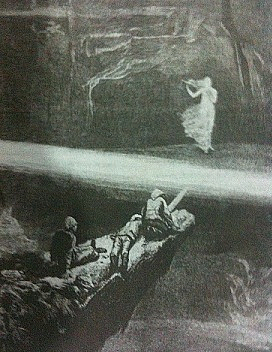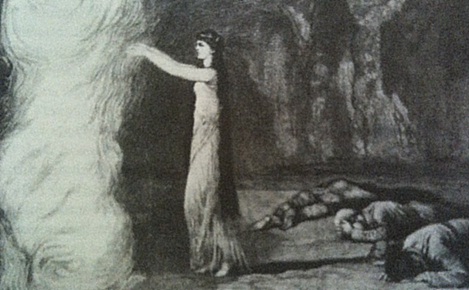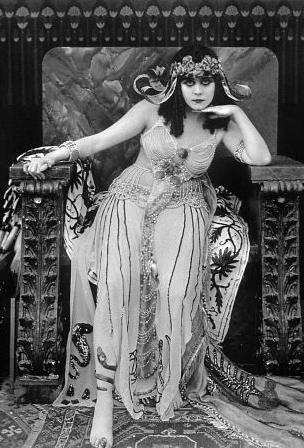Ayesha: Difficult to Categorize

Ayesha, the titular figure of H. Rider Haggard’s novel She, is a curious figure. It is all too tempting cast her as a monster of femininity—a bogeywoman that a world that normally disempowers females is somehow powerless to defeat. Indeed, it is also possible to view her as a bad moral example—a lesson to all those who might try to gain a level of power that they cannot handle or do not deserve. The former emphasizes a character’s dangerous strength, the latter a character’s dangerous weakness. It is not simple, nor is it an act cleanly done, however, to put Ayesha solidly into either of these categories. She embodies the first in her terrible power to blast those who oppose her and in her threat to “overthrow” Queen Victoria (225). She embodies the second in her death, which is the result of her attempting to become, in a sense, doubly immortal.
Yet, Ayesha emerges from this novel neither just a monster nor just a fallen woman. The trap is set within the text, even sprung, but it deals her character a glancing blow. The job is not utterly complete. Ayesha must always be a little more than just those labels. If she was just a monster, then it would’ve made more sense for her to be slain by our heroes instead of by herself. That would’ve signified that Leo or Holly were able to overcome both their inner-demons (in the form of desire for her) and the “demonic” figure they faced in the flesh. She would’ve been overcome and in a very satisfying way. Instead, she experiences a horrible death which is, yes, excessively cruel, but it is not especially satisfying. It is too horrible to be satisfying. “She was dying,” Holly narrates after Ayesha’s agonizing transformation from beautiful and young to ugly and mummified and then shrunken down like a monkey: “we saw it, and thanked God—for while she lived she could feel, and what must she have felt?” (257) The sight moves Holly to pity—all he can do is wish Ayesha’s suffering to end as quickly as possible. Pity is the important emotion here and one that poetic justice should not produce. In fact, this death allows the reader to feel for Ayesha on a more human level than her loftier powers and attitude allowed for earlier in the text. The way her death comes about allows for her to remain undefeated both by Holly and by Leo. In fact Holly says, “we both loved her now and for always, she was stamped and carven on our hearts, and no other woman or interest could ever raze that splendid die” (262). As Ayesha dies, she retains their love and has gained their pity. It is hardly the kind of end one expects from the defeat of a “monster” and therefore Ayesha defies that label.


Surely Ayesha made misjudgments and paid for them, therefore making her case as a “bad example” quite solid. But yet, the fact that Holly retains, not only love for her beauty, but appreciation of her power and wisdom, makes her status as a fallen woman as questionable as her status as a monster. She is far too admired and there is far too much attention lavished upon her in this novel to be completely undone by the foolishness of her mistakes. It may be useful when talking about Ayesha, to look at another powerful woman than looms large both in history and fiction, who Ayesha bares many similarities to—and that is Cleopatra. Both Queens in Africa, both known for their beauty and wisdom, both fashioned themselves as goddesses, and both are strongly associated with the snake. Cleopatra “histories” were largely written by those who did not know her or were her enemies and therefore stories about her are largely written through a similar misogynistic prism to Ayesha’s. Despite this, in both cases, the figures come across more fascinating and admirable and strong than they do figures the reader is invited to morally look down upon. Notorious? Yes. Inferior? Never. Cleopatra’s character is consistently revived and reinvented in a way that attests to the incredible charisma of this long dead queen. As for Ayesha, the entire narrative of She spins around her—before she’s introduced, they are seeking her; after she’s introduced, her wants and needs drive the action of the story until her death; after her death, the characters are consumed with her memory. In the end, both Ayesha and Cleopatra are larger figures than any text concerning them could contain and are too complex to be neatly labeled.



